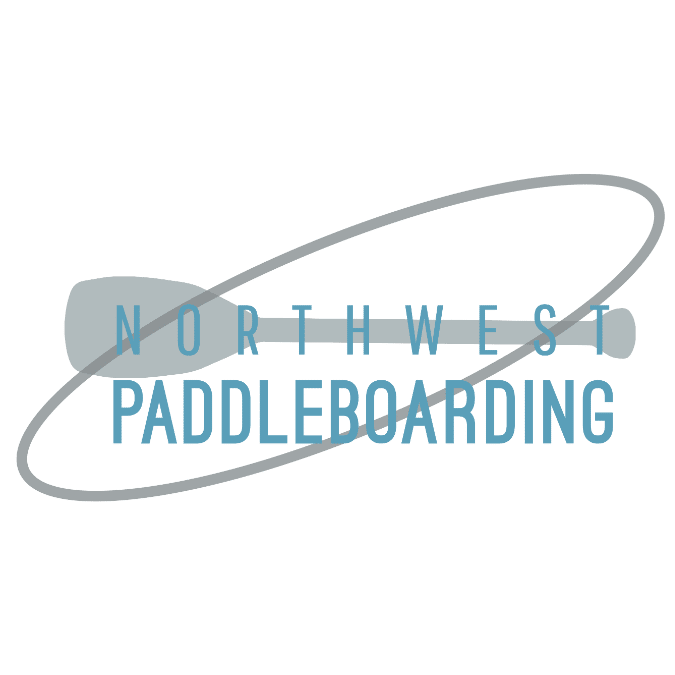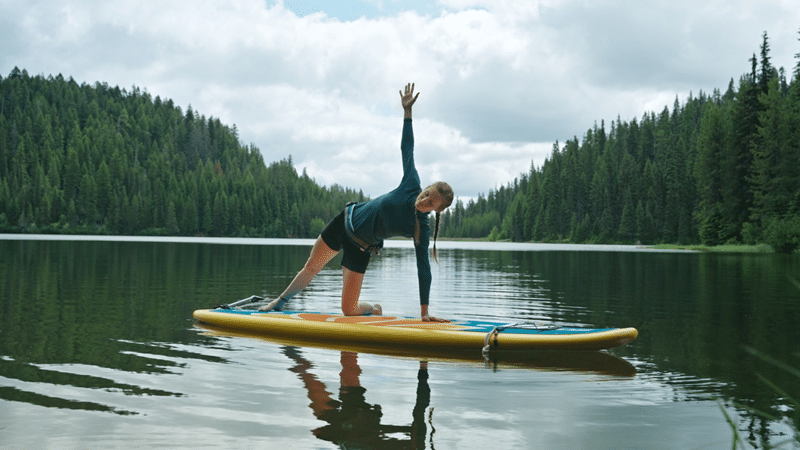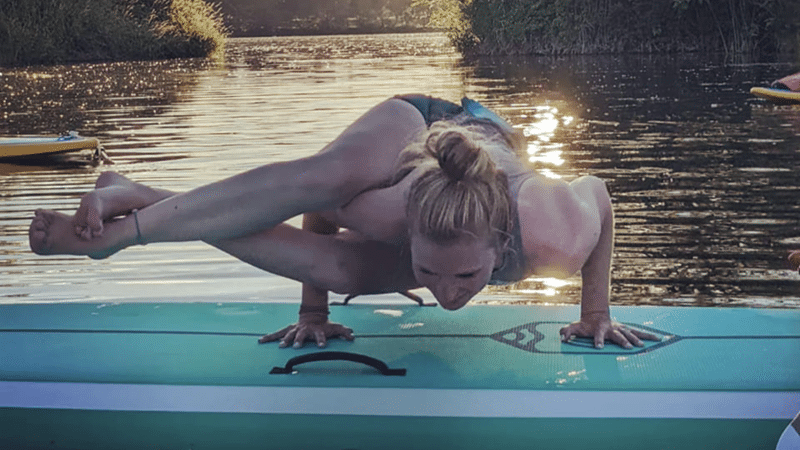Choosing the Right Paddleboard for SUP Yoga
Not every paddleboard is great for paddleboard yoga. Let’s explore the different features you should look for when you are shopping for a SUP Yoga paddleboard!
Paddleboard Size: Length and Width
- Length: Aim for a board at least 10 feet long, with 10 to 12 feet being ideal. This provides plenty of space for your movements.
- Width: A wider board offers more stability and room to practice various poses. Look for a width between 32 and 35 inches, with 34 or 35 inches being the sweet spot for yoga. I would say that width is more important than length for yoga, but both will add to your experience.
Deck Pad: Length and Material
- Full-Length Deck Pad: A deck pad that covers your paddleboard from nose to tail allows for more movement during your practice.
- Non-Slip Surface: Ensure the deck pad has a non-slip texture to prevent slipping on a wet board. I know, it seems crazy that slippery deck pads exist, but they do! Look for a deck pad that has more texture to it.
Carry Handle: Placement and Material
- Center Handle: While most boards have handles in the middle, some have them on the sides. Side handles can be beneficial during practice, allowing you to use them as props or avoid interference. Most boards have a center handle though, and this is how I keep my students in proper alignment on their board.
- Handle Comfort: If your paddleboard has a center handle, ensure it’s flat and free of hard foam or other materials that might be uncomfortable when lying down.
Board Type: Inflatable vs. Hardboard
- Personal Preference: Both inflatable and hardboard paddleboards are great for paddleboard yoga. Choose the one that aligns with your preferences and needs. Inflatables are typically the go-to, due to their easy storage and transportability. Hard boards take less preparation if you have the ability to store and transport them.
- Joint Comfort: Inflatable boards can be gentler on your joints and they hurt less if you fall on them. While some yogis feel that hard boards can feel a bit more solid and stable.
- Dive Deeper: Check out my blog – Inflatable vs. Hard Paddleboards: Which one should you get?
Storage Options
- Built-in Storage: If you plan to bring extra gear, consider a board with built-in storage compartments or bungee cords. If your board doesn’t have storage, you can always add aftermarket options.
- More Space: If you don’t normally bring a lot with you, consider a paddleboard that doesn’t have storage, allowing for more room to practice without interference.
Paddleboard Weight
- Board Weight: Remember to consider the weight of the paddleboard, especially if you’ll be carrying it by yourself to and from the water. Because paddleboards for yoga tend to be larger, they also tend to be heavier, so I recommend looking for a paddleboard that is less than 25lbs to ensure it’s manageable for you.


